Windsor Castle: a complete guide to planning your visit from London
The Windsor Castle Round Tower
Windsor may just be the best day trip out of London. It’s close by, easy to get to and there is plenty to do and explore. Visiting attractions such as Windsor Castle, St. George’s Chapel, Windsor Great Park and Eton College, gives you a great mix of history, nature and small town English charm and plenty of pubs to enjoy a pint!
Though it is very popular with tourists, it doesn’t feel “fake” or ruined by the large number of visitors. It’s still an authentic experience, as the castle is a working residence and also very integrated with the town.
Table of Contents
How to get to Windsor Castle from London
Windsor Castle dominates the view from Windsor train station.
Getting to Windsor Castle by train:
Absolutely the easiest way to get to Windsor from London is by train. There are several options.
The fastest way to travel to Windsor from London is to take the train from London Paddington Station to Windsor Central Station. Paddington Station can be reached via the Circle, Bakerloo, District and Hammersmith & City underground lines, making it very accessible from any Central London location.
This trip takes around 30 minutes but requires a change of train at Slough Station.
Windsor Central Station is located just below the Castle walls.
We opted for the more direct route by taking the South West Train line from London Waterloo Station to Windsor & Eton Riverside Station. It takes slightly longer at about 55 minutes, but the train is direct, which is always a plus.
As usual, we relied on Trainline to purchase our tickets. We’ve relied on Trainline to purchase rail tickets throughout Europe.
Note - This blog post contains affiliate links. This means that if we are recommending a product, activity, or hotel, we might be receiving a small commission if you buy or book from these links. This is done at no additional cost to you. We only recommend products we have personally used or have thoroughly researched.
Windsor & Eton Riverside Station is a 5 minute walk from Windsor Castle.
When your train rolls into the station, there is no doubt where you are as Windsor Castle looms over the station as picturesque as a postcard!
Side note: Waterloo is Britain's largest and busiest station and it’s quite impressive to see. Its recently refurbished concourse with arched glass & girder architecture is beautifully high-tech. The station sits on top of the Waterloo Underground Station, which is served by the Bakerloo, Jubilee, Northern and Waterloo & City lines. There is a huge departure board that’s easy to navigate, and lots of places to grab a bite or a coffee if you are early for your train.
If you are going to be taking a few day trips from London you might want to read our post: Traveling by train in Britain: a guide for beginners
The train to Windsor arrives at London’s Waterloo Station.
Getting to Windsor Castle by bus:
The Green Line No. 702 bus has daily service which runs from Victoria Coach Station. At £10 for an adult return ticket, it’s probably the cheapest way to get there but it takes about 1 hour and 30 minutes. We would definitely recommend a train instead.
Getting to Windsor Castle by organized tour:
If navigating the area on your own sounds a bit daunting, there are lots of available options for organized tours to Windsor Castle, some including other nearby destinations, such as Stonehenge, Bath or Oxford. Here's some ideas on tour options.
Visiting the Windsor Castle Complex
The highlight of visiting the town of Windsor is, of course, Windsor Castle. Home to English royalty for over 900 years, Windsor Castle is the oldest and largest still-occupied castle in the world. At only 22 miles from Central London, it was the late Queen’s favorite weekend getaway retreat for many years, and in the final few years of her reign, it was her permanent residence.
The grounds of Windsor Castle are open to visitors throughout the year; but don’t expect to run into any royals during your visit; of course, the private residences and entrances are off-limits.
But don’t worry - the place is huge and there is plenty to see. The timed Standard Ticket, which you can purchase through the Royal Collection Trust website, gets you inside the castle complex, where you can take your time wandering about.
The free multimedia tour is definitely helpful for making the most of your visit, so be sure to pick one up at the visitor entrance. Buying the ticket ahead of time gets you a discounted price, though purchasing at the door is also available.
Visitors wander the Windsor Castle grounds.
What can I see inside Windsor Castle?
You can tour the official State Apartments - these are the main ceremonial rooms that are still used today by the Royal Family for official visits of heads of state, investitures, and ceremonies.
Also part of the tour are the historical private rooms that were built for Charles II and his Queen, Catherine of Braganza in the 1600s. These are included with your standard ticket and definitely worth lining up to see, even if royalty doesn’t interest you all that much. (But honestly, if you’ve come to Windsor, and if you want to appreciate anything about British history, you can’t avoid the royal connection.)
The tour is self-guided and the rooms you’ll get to see are quite magnificent. There is so much art and so many treasures in this castle, it’s almost impossible to take it all in. Luckily the audio tour can help you with some of the highlights and helpful docents are happy to answer your questions.
We are FareDrop customers and love it, they send airfare sales for your home airport right to your inbox. It’s great!
Note - This blog post contains affiliate links. This means that if we are recommending a product, activity, or hotel, we might be receiving a small commission if you buy or book from these links. This is done at no additional cost to you. We only recommend products we have personally used or have thoroughly researched.
Unfortunately, photography is not allowed in the State Apartments. :(
Starting with the Grand Entrance and Staircase, you will be swept into the grandeur of this palace. A mesmerizing view of the Long Walk from the State Entrance gives you a feeling of being an “insider”.
The Grand Reception Room, with its chandeliers and walls gilded in gold, was once used as the main ballroom in the Castle. It was severely damaged in the fire of 1992 and painstakingly repaired to its former glory which is how we see it today.
I think my favorite room was the massive Waterloo Chamber. The art in the chamber celebrates the defeat of Napoleon Bonaparte in 1815 - just a little bit of a brag! We saw an enormous dining table in the center of the chamber, set for an event, which was pretty spectacular.
Even that impossibly large table didn’t fill the room - it’s almost deceiving how huge the chamber is, because the size of everything in the space seems so well proportioned. The paintings are enormous, the ceilings high. Only when I started counting chairs did I realize how much could fit in there! (Lots of people have “extra chairs” lining their dining room walls. But I think here I stopped counting at thirty-something! And that doesn’t even include the ones around the table!)
Many events take place in the Waterloo Chamber, both official and private ones for the royal family. If you hear about private performances of any kind at Windsor Castle, this is the room where those usually takes place. I could not help thinking of a young Princess Elizabeth and Princess Margaret putting on their Christmas pantomimes in this room during the war years. Must have been pretty special. :)
During certain times of the year, (autumn through spring) you can also see the Semi-State Rooms, including the lavish Crimson Drawing Room, and the Green Drawing Room - which may be familiar names if you’ve read anything historically about the royal family. These rooms are among the most richly decorated interiors in the Castle and were often used by Queen Elizabeth II for official entertaining. We didn’t get to see them as they were not open during our visit.
If you come during the Christmas holidays, the State Apartments are lavishly decorated for the season. The focal point of the display is the huge, sparkling, 20-foot high tree in St. George's Hall, taken from Windsor Great Park. For more ideas on what to see in London during the Christmas season, check out our blog post: Planning your visit to London in Winter.
Practical tip - there are two lines for the inside-the-castle tour; one that leads directly to the State Apartments and the other line includes a stop at Queen Mary’s Dolls’ House. This isn’t very apparent - we didn’t even know it until an attendant came down the line and told us that anyone wanting to go right into the State Apartments and not see the Dolls’ House can move ahead to the other, much, much shorter line.
(If I remember correctly, the Dolls’ House line is on the left and the direct line to the State Apartments is on the right. But I didn’t write it down so I can’t be sure. Always a good idea to ask! Attendants were all super nice and helpful.)
Just our two cents - Unless you are absolutely bent on seeing the Dolls’ House (we were not particularly), we would recommend skipping it. The wait was an hour longer on the Dolls’ House line - remember folks are stopping to take a close look at all the items in the house. Whereas, the direct line into the staterooms rolled right in; almost no wait at all.
Just remember to check or ask because, as stated, it won’t be obvious that there are two separate lines.
Update for 2024:
This year marks the 100th Anniversary of Queen Mary’s Doll’s House. But don’t worry - even if this is the year you think you’d like to see it, you still don’t have to necessarily get on that line. Throughout 2024, a special centenary display is included as part of your visit to Windsor Castle. In the magnificent Waterloo Chamber you will be able to get up close to some of the tiny treasures usually contained within the Dolls’ House. This is probably a better look at the miniatures than you can get walking past the whole house. For complete information, go to The Royal Collection Trust.
Windsor Castle Hours for 2024:
The Castle is open to the public throughout the year; however it is closed on Tuesdays and Wednesdays and, because it is a working residence, the State Apartments or the Castle itself can be closed on short notice.
1 November 2023 - 29 February 2024- 10:00 to 15:00, last entry at 16:15
1 March 2024 - 31 October 2024 - 10:00 to 16:00, last entry at 17:15
About Queen Mary’s Dolls’ House
In case you are wondering what Queen Mary’s Dolls’ House exactly is, it’s not something Queen Mary played with as a child or anything “personal” like that.
It is an architecturally meticulous display house gifted to Queen Mary during the 1920s, that was created to be an intricate replica of an English country mansion, showcasing the finest British craftsmanship of the period in miniature.
Every item was created in exquisite detail, including tiny replicas of real books from the period in the library (written in the authors’ own handwriting), working electric lights and lifts, a stocked wine cellar, perfectly built furniture, woven carpets, real porcelain dishes, even pantry items, and a garden.
Many important “brands” of the day contributed to the dollhouse; the miniatures were either made by the companies themselves, or by specialist model-makers.
The dollhouse manages to capture a very specific period in the history of the Royal Family - the 1920s, a time when the world was changing rapidly. It is a one-of-a-kind work of art that must have seemed quite magical when it was often displayed in connection with Queen Mary’s many charities that she patronized and also at the British Empire Exhibit of 1924-25.
It’s now on permanent display at Windsor Castle, set in a specially designed room, resembling a miniature art gallery..
Though it all sounds pretty darn cool, honestly, I just couldn’t justify waiting an hour on line just to get a look at it, and probably not even a very good look. But the Royal Collection Trust has made some excellent “doll’s eye view” videos that are worth watching.
New in 2024: Queen Elizabeth II’s Life at the Castle
For 2024, there is interesting add-on that you can purchase with your Standard Ticket.
Small group talks focusing on Queen Elizabeth II’s life at the castle will be available starting in March 2024.
Windsor remained a constant in Her Late Majesty’s life; through childhood, war and 70 years on the throne. The Castle served as a stage for the great events of Queen Elizabeth II’s reign, as well as for private family moments, making it her favorite weekend home.
Tickets and information available at The Royal Collection Trust.
Just for fun - I had fun with my own little treasure hunt, looking for iconic red post boxes while in and around London. Got me an Edward VII at Windsor! ;) You can see my little post box collection on our Instagram feed.
The Changing of the Guard at Windsor Castle
Windsor Castle is one of the best places to witness the Changing of the Guard Ceremony. It takes place within the Castle Precincts, so as long as you have purchased a ticket to get in, you can see it.
Since the size of the crowd is generally controlled by the timed ticket situation, it’s fairly easy to get a good spot to view it, without having to get there very early. We literally only grabbed a spot maybe ten minutes before it started.
And because you are exploring the grounds on your own time schedule, there really is no conflict to getting there on time.
Tip - if you position yourself on the edge of the walkway across from the Henry VIII gate, you will get a good view of both the guards marching through the gate from the Victoria Barracks, and the guards on the premises parading down from the castle above. They will walk right past you.
The Henry VIII Gateway closes to the public during the changing ceremony so the guards can pass through. I did feel sorry for the attendants trying to clear the path of tourists making a break for it before the ceremony started! But to their credit, they all kept their “happy” on and never lost their cool. I can’t say enough about how nice everyone working there was.
The Changing of the Guard takes place on Tuesdays, Thursdays and Saturdays at 11am, in front of the Guard Room in the Lower Ward.
The ceremony begins with the Windsor Castle Guard forming up outside the Guard Room. When the new Guard arrives, led by a Regimental Band, Corps of Drums or occasionally by a Pipe Band (which is what we saw), the handover of duties will take place, including the changeover of sentries. At the conclusion of the ceremony, the Old Guard going off duty will return to Victoria Barracks in Windsor town. The ceremony in its entirety lasts about 45 minutes.
It’s rather fun, I think, that the guards have to march through a bit of the town to enter the castle. I like how it is just a part of daily life there. The route they take from the barracks goes up Sheet Street, left into the High Street, past the Parish Church and the Guildhall, then turns right onto Castle Hill by Queen Victoria's Statue and into the Castle.
When The King is in official residence, the parade takes place on the Castle Forecourt.
If Changing of the Guard - or “Guard Mounting” - ceremonies particularly interest you, we have a very informative post on Experiencing the Changing of the Guard at Buckingham Palace, St. James’ Palace and Wellington Barracks.
Saint George’s Castle. Even though The Royals use Windsor Castle as an escape from the city they can’t escape the sounds of airplanes flying low on approach to Heathrow Airport (see plane in the upper right of the photo.)
Saint George’s Chapel
I think St. George’s Chapel might have been my favorite feature of our visit to Windsor. Admission is included with your standard ticket, and touring it is self-guided with the help of your multimedia guide, so wander in when it suits you. We did it after watching the Changing of the Guard, and had no issue getting in.
St. George’s Chapel is located on the north side of the Lower Ward of Windsor Castle.
St. George’s Chapel closes at 4pm, although visitors are welcome to attend evensong at 5:15pm. The Chapel is also closed to visitors on Sundays but worshippers are welcome to attend services.
Although it is a splendid building, and the burial place of 11 monarchs, inside the chapel feels quite intimate, even small, as crazy as that sounds.
I really wish we could have taken photos inside, especially of the King George VI Memorial Chapel, where Queen Elizabeth II is interred, along with her husband Prince Philip, her parents King George VI and Queen Elizabeth, the Queen Mother, and her sister Princess Margaret.
I thought it was such a lovely and serene location for the family’s final resting place. The way it is built onto the existing structure gives it a very unique shape and dimension, without disturbing the magnificence of the building. It feels like the family’s own little private hideaway. The stained glass above the small altar sheds a gentle, soft light.
Of course the King George VI Memorial Chapel is something most visitors want to see, so you have to queue up to walk past it.
The line moves quickly, but you are not allowed to linger to ponder or take photographs. So I didn’t feel like I really got to take it all in on the first pass. But it was no problem swinging around to get on the line again, and coming around for another look. I’m so happy I did, for there was so much more to notice the second time around.
While walking in the queue in the Nave, you will go right by the tomb of King George V and Queen Mary (Elizabeth II’s paternal grandparents - and yes, Queen Mary is the Doll’s House lady). Make sure you take a good look at this tomb because it is quite lovely. The white marble likenesses of them are amazing, lying in repose. Walking past them made me feel like I might be tiptoeing past the sleeping couple in their bedchamber. It took me a minute to realize how casually I had just brushed past the tomb of a king and his queen consort.
But that’s how St. George’s Chapel is, and what I mean by the intimacy of it. I know it’s very grand in its decorations. But it feels in many ways like the local parish. Which it is! (ok, a well-to-do parish, but a parish just the same.) For example, the choristers of the Chapel are all boarders at St. George's School, which is situated within the Castle precincts. It is very much a community church. Kings and Queens just happen to be part of that community.
Guards walk through the courtyard outside Saint James Chapel.
Additional tombs and memorials located in the Chapel include those of Edward IV, Henry VI, and King Edward VII and Queen Alexandra. The sealed entrance to the vault containing the coffins of Henry VIII and Charles I is under the center of the Quire.
The Quire - or “choir” - is another truly memorable part of the chapel. It was the first part of the chapel to be completed in the 1400s and it is the space most people may recognize from seeing royal weddings and services on television, most recently the Queen’s funeral.
This was another area where I just could not believe how “cozy” it was in real life. It is much tighter than it seems in photos. And standing right by the sealed rectangle in the tiled floor where the queen’s coffin was recently lowered, just gave me goosebumps. It is hard to imagine until you’ve been there just how “real” it all is.
St. George’s Chapel is also the spiritual home of the Order of the Garter, one of the oldest and most important orders of chivalry in the world, founded by Edward III in 1348. Every knight is required to display a banner of his arms in the Chapel, making for a colorful, chivalric display. When a knight dies, the banner is taken down and returned to the family.
Every June the Sovereign and the Knights of the Garter attend an annual service of thanksgiving in St. George's Chapel, known as Garter Day. A grand procession of the Knights takes place at Windsor Castle, accompanied by a marching band and Officers of the Order. The Knights dress in the flamboyant ceremonial robes and trappings of the Order.
The Garter Day Procession is a joyful and popular event in Windsor. A limited number of tickets are available to the public to watch the procession to St. George's Chapel from inside the precincts of Windsor Castle. The tickets must be applied for between January and March and applicants can request up to four tickets each; with ticket holders being aged 6 and older.
The Gardens of Windsor Castle
I was blown away by the beauty of the gardens in and around the grounds of Windsor Castle. No wonder Her Late Majesty loved this residence so much!
Famous for its many stone terraces and of course its iconic tower, the castle is a very picturesque construction, with lots of tiny details like crowns and coats of arms carved above the faceted window structures. But wow, those gardens!
In mid-spring when we visited, the castle seemed to be floating in a sea of multiple shades of thick, brilliant greens, with pops of purple, pink and red sprinkled in. Set against the pleasing gray shade of the hard heath stone of which the castle is built, it is quite beautiful.
The Moat Garden at Windsor Castle
Thanks to those beautiful gardens and cooperative weather, we were able to take some really gorgeous photographs, which made up for not being able to photograph inside.
No picture taking or filming is allowed inside the Castle or St. George’s Chapel; but feel free to shoot photos or videos anywhere in the outside Castle grounds. Drones, however, are strictly prohibited at all times.
Windsor Castle is set on a chalk escarpment overlooking the River Thames, and the gardens at Windsor Castle have evolved over the centuries to fit this unique location. The three gardens you may encounter while visiting Windsor today are the Jubilee Garden, the Moat Garden and the East Terrace Garden. Each has its own unique history.
There are certain days that these garden paths are open to the public; usually weekends during the summer months.
The Jubilee Garden, which can be seen year-round, is the most recent garden to be created, established in 2002 to mark the Golden Jubilee of Queen Elizabeth II.
The Moat Garden has been carved out of the dry moat around the historic Round Tower, an area that has been cultivated since at least the seventeenth century. It is thick with layers of lovingly tended growth.
The East Terrace Garden is a formal garden that dates back to George IV, and faces toward London, offering beautiful views.
If castles and palaces are your thing, we have blog posts about visiting Buckingham Palace and Kensington Palace.
No longer used as a moat this area now serves as one of the many gardens at Windsor Castle.
Is there dining at Windsor Castle?
There are snacks, sandwiches, light meals, a wide assortment of teas and sweets available at the Undercroft Café at Windsor Castle.
The Cafe is located in one of the oldest surviving spaces in the 1,000-year-old Castle. During the summer months, the Cafe serves ice cream produced using milk from the Jersey herd at the Royal Farms, Windsor.
But really, there are so many places to eat in town, we didn't find it necessary to eat while on the castle premises.
Before we entered the premises, while waiting for our 10am entrance time, we enjoyed a delicious scone & coffee at Fortescues, a coffee & gelato shop just outside the castle gate. Dining on the quaint cobblestone street of Old Town looking directly at the Castle was fun and festive. Doesn't get better than that! This got us pumped up for our tour and was enough to hold us over until we left the castle grounds a few hours later, when we ate lunch in town.
The street leading from the Windsor train station to Windsor Castle.
Exploring the town of Windsor
I loved the town of Windsor. Yes, it has a lot of tourists milling around, but you just have to embrace it to a certain extent. People do really live there though! They are just used to having royals as their neighbors.
The area known as “Windsor Old Town” refers to the medieval part of Windsor, which grew up around the castle, a few streets just outside the castle’s main gates that are characterized by cobblestones. This is not a place where local residents hang out these days, but it’s still fun to explore as a tourist.
Windsor Old Town is full of pubs - there is no chance you won’t be able to find a place to eat.
Many of them have names that reflect their “royal” heritage, such as The “Duchess of Cambridge” and “Ye Olde King’s Head”, which is supposedly the oldest inn in Windsor and where William Shakespeare wrote the Merry Wives of Windsor.
We enjoyed lunch at Cafe Rouge (made famous by Bridget Jones in ‘Bridget Jones’s Diary’), located at the Windsor Royal Station. This partially covered shopping center, located opposite the castle, was once part of the historic central railway station built in the 1850s. Waiting rooms and left luggage storage areas have been converted to modern shop units, along with new units of a complementary style that were added on in the 1990s.
Windsor Royal Station is considered the preeminent shopping center at Windsor. Amidst its picturesque and historic setting in the heart of the town, it offers a wide variety of contemporary stores and eateries for all budgets, alongside a range of eclectic independent retailers. It’s a great atmosphere, lively and fun.
As we were there during Coronation Week, the decorations in town may have been more festive than usual, but something tells me it’s always like that to some degree, with “royal details” all about. I enjoyed window shopping and even picked up a few royal trinkets of my own. I was particularly charmed by my little tin of tea shaped like a little red pillar postbox!
Windsor is best enjoyed just walking and taking it in, as you might in a college town. If you are approaching Windsor as a day trip, there is realistically a limit to what you can visit in a day, especially with the hilly, cobblestoned terrain. But there is some pretty interesting architecture and many monuments to take in during a walkabout.
Some notable buildings:
Guildhall Windsor - designed by Sir Christopher Wren in 1690 (the architect of St. Paul’s Cathedral in London), whose family came from Windsor. It is now the home of the Windsor & Royal Borough Museum, which contains a collection of local history items.
The Guildhall Windsor was where the marriage of Prince Charles (now King Charles III) and Camilla Parker-Bowles took place in 2005. It was also hosted the first same sex marriage in England between Sir Elton John and David Furnish.
Windsor Theatre Royal - This 1910 building down the hill from the Castle is the local theater in town, with a wide variety of performances. It often hosts new shows that eventually make it to the West End, so locals take a particular pride in their theater..
St. John the Baptist Parish Church - Considered the civic church of Windsor, St. John the Baptist Church dates back to before the royals moved their court to Windsor. Many mayors of Windsor are buried in the church and in the churchyard. The current Gothic Revival structure was rebuilt circa 1820.
The church houses a notable painting of the Last Supper, presented to the church by George III in 1788, having previously been an altarpiece in St George's Chapel. The painting, attributed to Francis Cleyn, and restored in 2003, hangs on the west wall.
Windsor War Memorial - Located on High Street not far from Guildhall and right beside St. John the Baptist Parish Church, is a modest memorial to Windsor residents who died or went missing in both World Wars. You will walk right by it on the street, and it is easy to overlook. But do stop and take a look. It’s pretty moving, with the names listed and as with many war memorials in England, it is often decorated with wreaths of poppies.
The Diamond Jubilee Water Fountains - About a five-minute walk from the castle is a small park along the Thames called the Goswells. The park has a few nice features and one of them is the Diamond Jubilee Water Fountain. The fountain was created in honor of Windsor’s most beloved resident, Queen Elizabeth II, to mark the occasion of her Diamond Jubilee in 2012.
It’s a cool structure; the bowl of the fountain suggests a crown while vertical jets splash in varying heights set to timers and the water is lit from underneath for added effect. It is surrounded by seating and gardens so it’s a nice little stop. Perhaps a good spot for families with children to chill out.
The Long Walk
As the name suggests, the Long Walk is a long walk!
It’s a three-mile straight path that leads from Windsor Castle to the King George III Copper Horse Statue at the top of the hill at Windsor Great Park.
It is free to walk the Long Walk.
The Long Walk is a paved tarmac surface, which makes it a comfortable walking surface, with trees and green space all along the sides of the path. Many visitors see herds of deer grazing in the evening under the trees.
As you walk the Long Walk, Windsor Castle is always in sight behind you and the further you get from it, the more sweeping the view becomes. When you get to the top of the hill, the view of the castle and the countryside is quite spectacular.
The King George Copper Horse Statue is set on a hill, so it can be lovely against a backdrop of blue sky. There are fantastic views of London and you can also see planes coming in for a landing at Heathrow Airport.
At the end of the Long Walk, you can turn left where the path continues into Great Windsor Park.
Most visitors consider walking the Long Walk, or at least part of it, as a “must do” while visiting Windsor. But here are things to consider:
The Long Walk is quite a hike. If you have already been walking all day, touring the Castle and exploring the hilly town, 3 miles out and 3 miles back is a lot of added walking and time. Consider only doing a little of it to get the experience.
The Long Walk can get crowded on summer weekends, kind of ruining your peaceful hike, so weekday visits in seasons other than summer are best.
There is no shade along the Long Walk. For this reason, it is best to visit it when it’s not summer, and or at least do it after 6pm or so, perhaps after a break for afternoon tea. Bring water, a hat, and sunglasses.
You will have to cross one busy street to complete the Long Walk.
No bicycles or skateboards are allowed on the Long Walk.
Windsor Great Park
Windsor Great Park is in itself a “walking visit”. It is enormous. And beautiful. And historic. It’s full of gardens and wild spaces, monuments, animals, and play areas. Honestly, it is worth a day’s visit in its own right.
Windsor Great Park is part of the Windsor Estate, an ancient royal grounds featuring rolling grasslands, forests, gardens and several lakes. It covers 4,800 acres and is the home of rare wildlife, along with National Collections of plants and Champion trees - the largest and tallest trees in Britain and Ireland.
Everything about Windsor Great Park sounds incredible and I really wanted to see it. But in all honesty, Windsor Castle, Windsor Old Town, The Long Walk, and Windsor Great Park proved too much to realistically take on in one day. We’d already done an astounding amount of walking on our London area vacation.
My feet could not go any further.
Unless you have a car (there are car parks at Windsor Great Park that charge by the hour; however only staff and residents are permitted to drive into the gates, visitors must follow careful guidelines), or are doing this as part of an organized bus tour, trying to cover this much ground as one day trip is a lot. I’m not saying it’s impossible, but perhaps too much to be enjoyable, even if you have stronger feet than I do!
Here’s our bottom line advice - If it’s your first time visiting Windsor, then concentrate on Windsor Castle and don’t worry so much about getting to Windsor Great Park on the same day. The Castle is the heart and center of the area, and the reason you came, I would think! With limited time in London, and only one day to spend in the Windsor area, you may have to accept that you can see everything there is to see.
If you do have more time, however, the Long Walk and Windsor Great Park perhaps are best enjoyed as a day trip by themselves! A trip to Windsor just to walk the Long Walk and hike on into Windsor Great Park and see what it has to offer sounds like a great day.
It’s now on my “reason to go back” list. ;)
Eton College
We didn’t get this in, as we had already done a lot of walking, but Eton College is right across the River from Windsor Castle and an easy add-on to your day. After all, Eton College just might be the Most British Thing That Ever Britished, so why not, right?
Eton College is considered England’s most distinguished public school, with a list of alumni that includes royalty, prime ministers, world leaders, renowned writers and public personalities. It is a secondary school - what Americans would call a high school.
The college is located at the top of Eton High Street and occupies most of the northern part of Eton town, on the other side of the river from Windsor. It’s only a fifteen-minute walk to the Castle, and it has been reported that, as a student at Eton, Prince William often took the walk over to have tea with his grandmother, the Queen.
All the boys enrolled at Eton are boarders, and they wear the famous Eton uniform at all times. This consists of a black tailcoat (or morning coat) and waistcoat, false-collar with white tie, and pin-striped trousers. If you visit when the term is in session, you will see the boys walking around dressed in this traditional uniform.
Along with its excellent education standards and rich history, Eton College also maintains three museums: the Museum of Eton Life, the Eton Museum of Antiquities, and the Eton Natural History Museum. These museums are open only on Sunday afternoons or as part of some tours.
You can simply stroll through the northern half of the Eton campus on your own, or take a guided tour for a more in-depth experience.
It is recommended that tours be booked ahead and online, though tickets are sometimes available on-site 15 minutes ahead of time. Tours take 90 minutes and cost £10 plus a booking fee.
Windsor Wrap Up
There is so much to do and see around the area of Windsor Castle, that it is hard to get it all in! There is more to see than we have even covered here, but we hope we have given you some good ideas and tips for planning an enjoyable and interesting day trip.
If you’ve stuck with me this far with this longer than usual post, let me just end by answering a few FAQ’s:
How much time do I need at Windsor Castle?
There is a lot to see at Windsor Castle, so you will need a minimum of two hours in the Castle Precincts. It’s nice to take your time. We suggest getting an early ticket, then you can spend some time afterward exploring the town afterward.
Is Windsor Castle a good trip with kids?
Windsor Castle is one of the more “kid-friendly” palace experiences in the UK
For one thing, you can take your time doing it. Once you get inside the castle walls for your ticketed time, you can look around at your own - or your kids’ own - pace. There is also an option for the multimedia tour that is geared more toward families with children, hosted by a character called Scorch the Dragon. The tour is aimed at children aged 7-11 years.
I think children would enjoy walking around the grounds of a “real castle” - for it truly looks like one - and watching the changing of the guard.
I’m not sure if the state apartments or the chapel would hold much interest for young children, but there are some spaces that are better suited for them.
Pug Yard Learning Center - During the UK school holidays, the Pug Yard Learning Centre can be found just inside the perimeter walls of The Castle. It is a great base for families to use during their visit, providing crafts, activities, storytelling, and a Chill Out Zone for toddlers.
Families can also picnic within the yard, or use the indoor lunch hall in inclement weather.
Legoland - Did you know there is a Legoland attraction just two miles from the Windsor town center?
I found that kind of amusing - I guess when I saw the sign for it at the train station I was picturing a castle built of colorful Lego bricks in the distance behind the real thing!
And actually, the reality is cooler than my imagined version. Legoland Windsor features, along with fun rides and activities, and expansive “MiniLand” that boasts model scenes from not only London, but other cities in Europe, the USA and all over the world.
Windsor Castle, Buckingham Palace, The London Eye, as well as Kennedy Space Center, Sydney Opera House, Times Square and Taj Mahal are just some of the models created from almost 40 MILLION bricks!
I imagine this would make for a good “family weekend” trip - one day at the “real castle” and one day at the Lego-themed park.
There is a Legoland shuttle bus that leaves from the Royal Theater in Windsor.
An interior walkway through Windsor Castle.
and finally……
What role did Windsor Castle play during World War II?
Many children of London were evacuated out of the city during the Blitz. Windsor Castle was where Princess Elizabeth (later Queen Elizabeth II) and her sister Princess Margaret were evacuated to during the war, while her parents, the King and Queen, famously remained in London to face the bombings along with the British people. At the time, this location was not revealed; the newspapers only reported that they were in a “safe location in the countryside.”
The King and Queen did come to Windsor to spend weekends and some other nights with their daughters whenever possible. The royal family often had to spend nights in the dark basements under the tower which served as air-raid shelters.
Though the castle itself was never bombed, the area around it often was, so the Princesses were not unfamiliar with the danger. Some rumors say that Windsor Castle was intentionally spared, because Hitler wanted it for his own residence once the Allieds were defeated and he would supposedly take over England. Thankfully, there was never cause to find out if this rumor was true!
The wartime fortress of Windsor Castle could be rather gloomy. Black-out curtains covered the windows to make the castle less of a target at night, and a special contingent of Grenadier Guards were charged with protecting the princesses. These guards and their families were often the only “outside” people the princesses had to socialize with, making for an isolated existence, but not necessarily an unhappy one.
Princesses Elizabeth and Margaret kept busy throughout the war, not only with their lessons, Girl Guide activities, (and schmoozing with the guards), but also with Victory Gardens that were planted and maintained at Windsor. Elizabeth also trained as a mechanic in the ATS as a teenager.
Both princesses took part in a series of Christmas pantomimes intended to raise money for charity. They sold tickets to royal family members and guests and performed in the Waterloo Chamber, with costumes and props cobbled from what could be found around the castle. Cinderella was performed in 1941, followed by Sleeping Beauty and Aladdin. The last pantomime in 1944, titled “Old Mother Red Riding Boots,” was created by the princesses themselves with the help of Hubert Tanner, Headmaster of the Royal School at Windsor.
Efforts were taken to protect the Royal Collection as well during this time. Precious drawings and paintings were taken down and moved elsewhere, while historic documents in the Royal Archives were moved out of the Round Tower and stored in the Castle’s underground areas. The Crown Jewels, including the magnificent Imperial State Crown, were transferred for safekeeping to Windsor Castle from the Tower of London. I’ve read that some accounts that claim that some items of the Crown Jewels were disassembled and stored in biscuit tins!
Princess Elizabeth also made her first public broadcast in 1940 from Windsor Castle, at age 14. She addressed other child evacuees during the Children’s Hour on the BBC. Her parents were reportedly in the next room listening and were very proud!
So much history in one place.
Anyone who knows me or is familiar with my posts will know I can’t resist getting some WWII lessons in there. ;) But all that aside, I really encourage you to go spend a day at Windsor Castle. It doesn’t disappoint!
This post was researched and written by Debbie of the Empty Nest Explorers. You can learn more about the Empty Nest Explorers here.



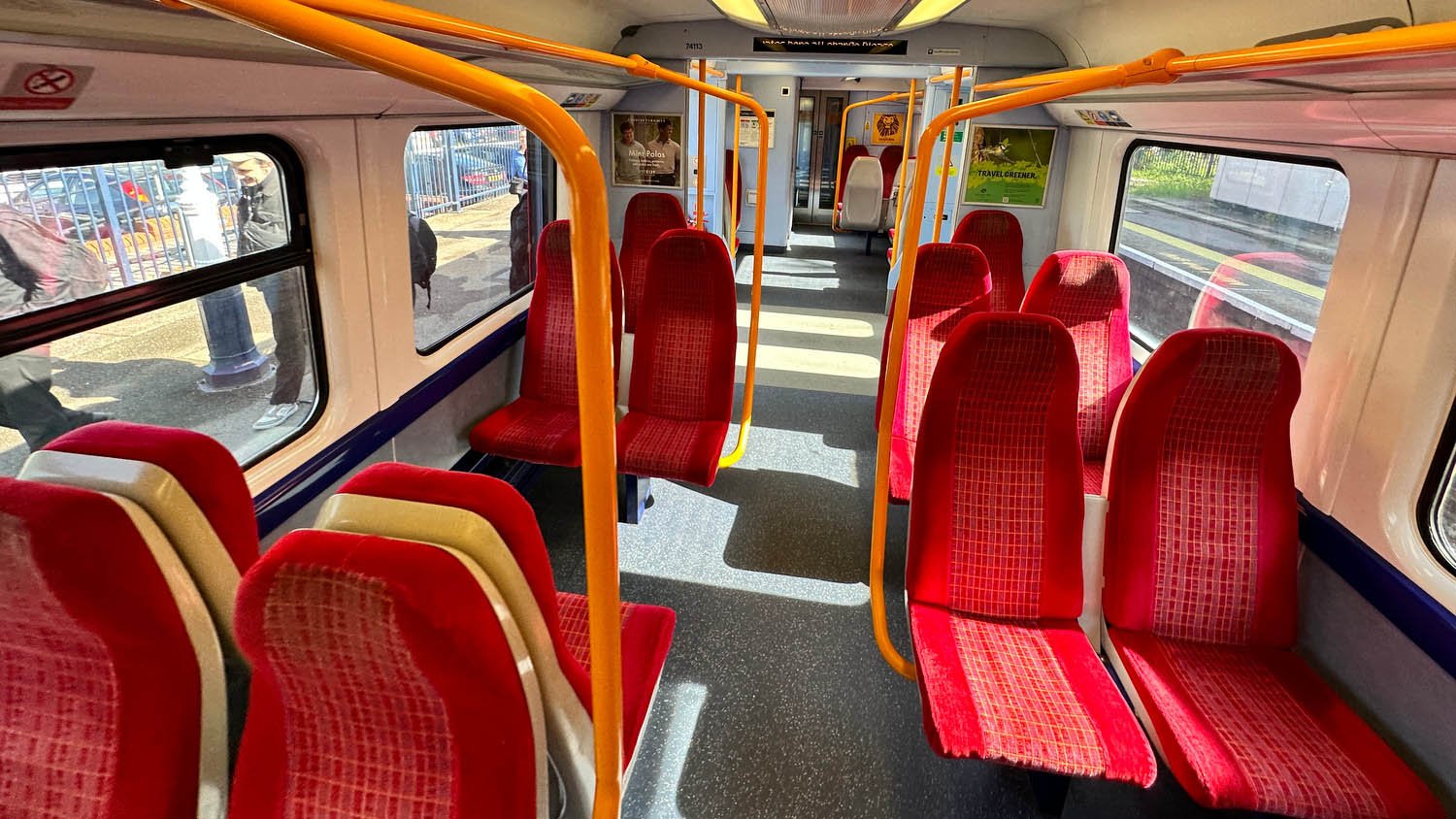
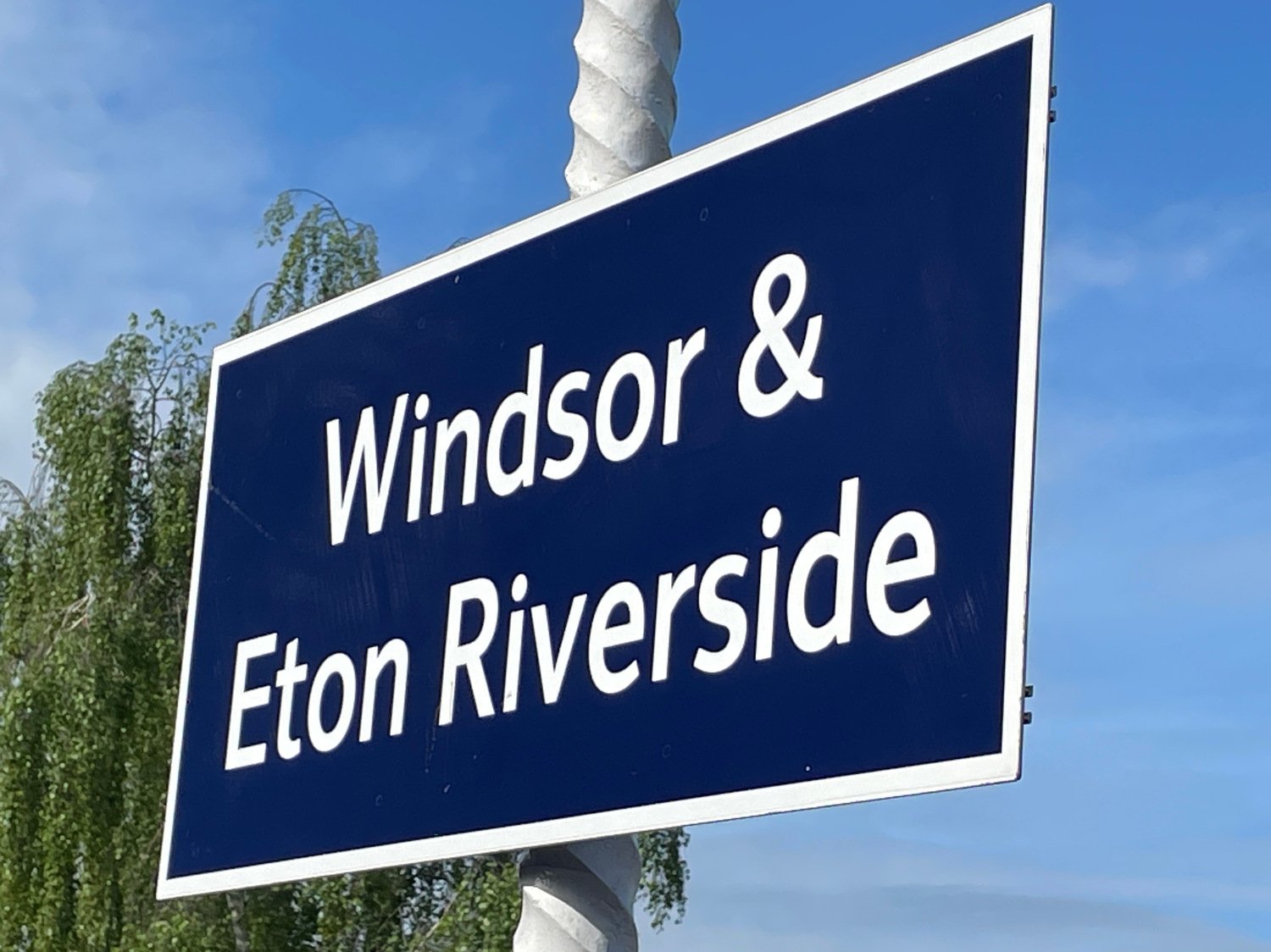





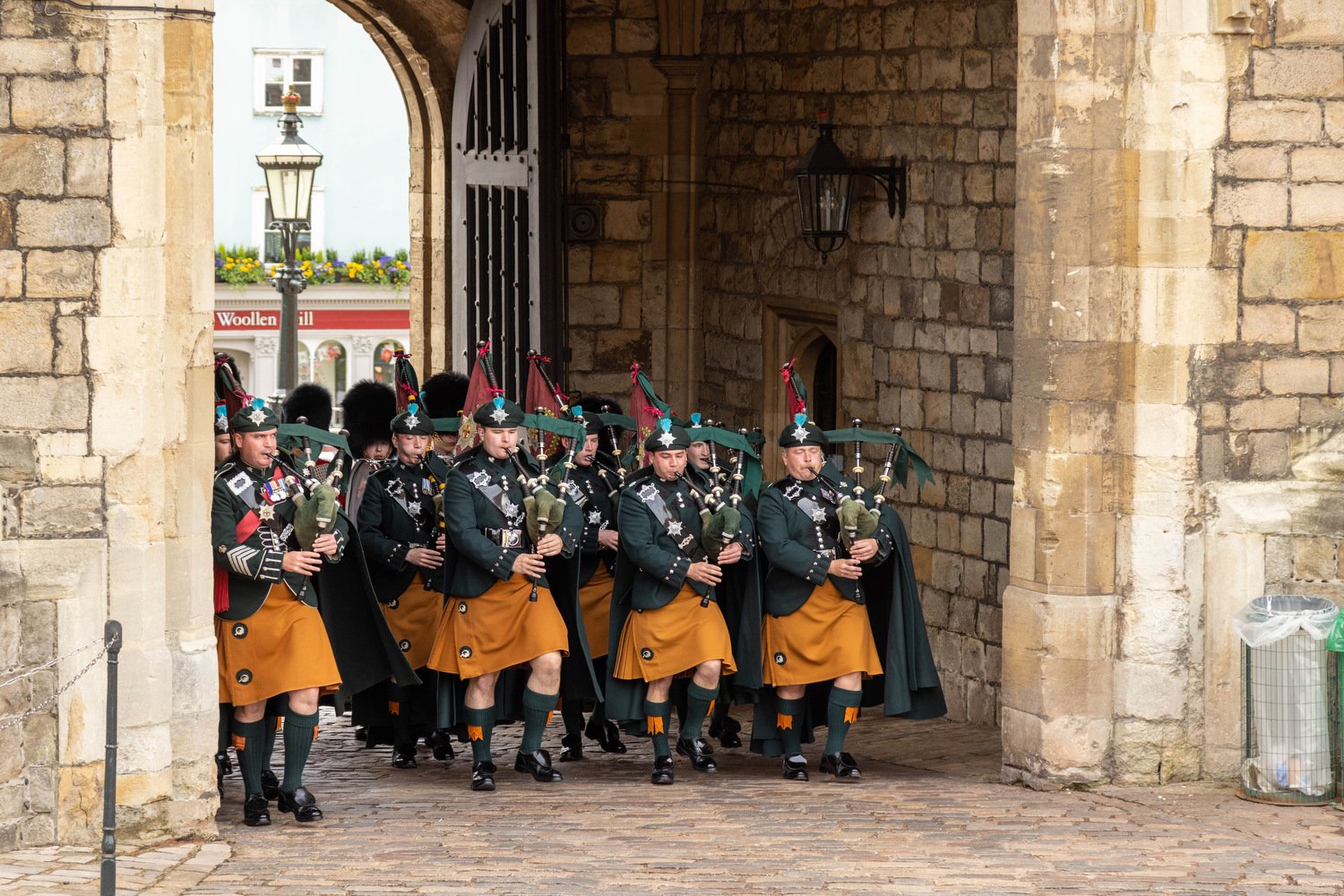
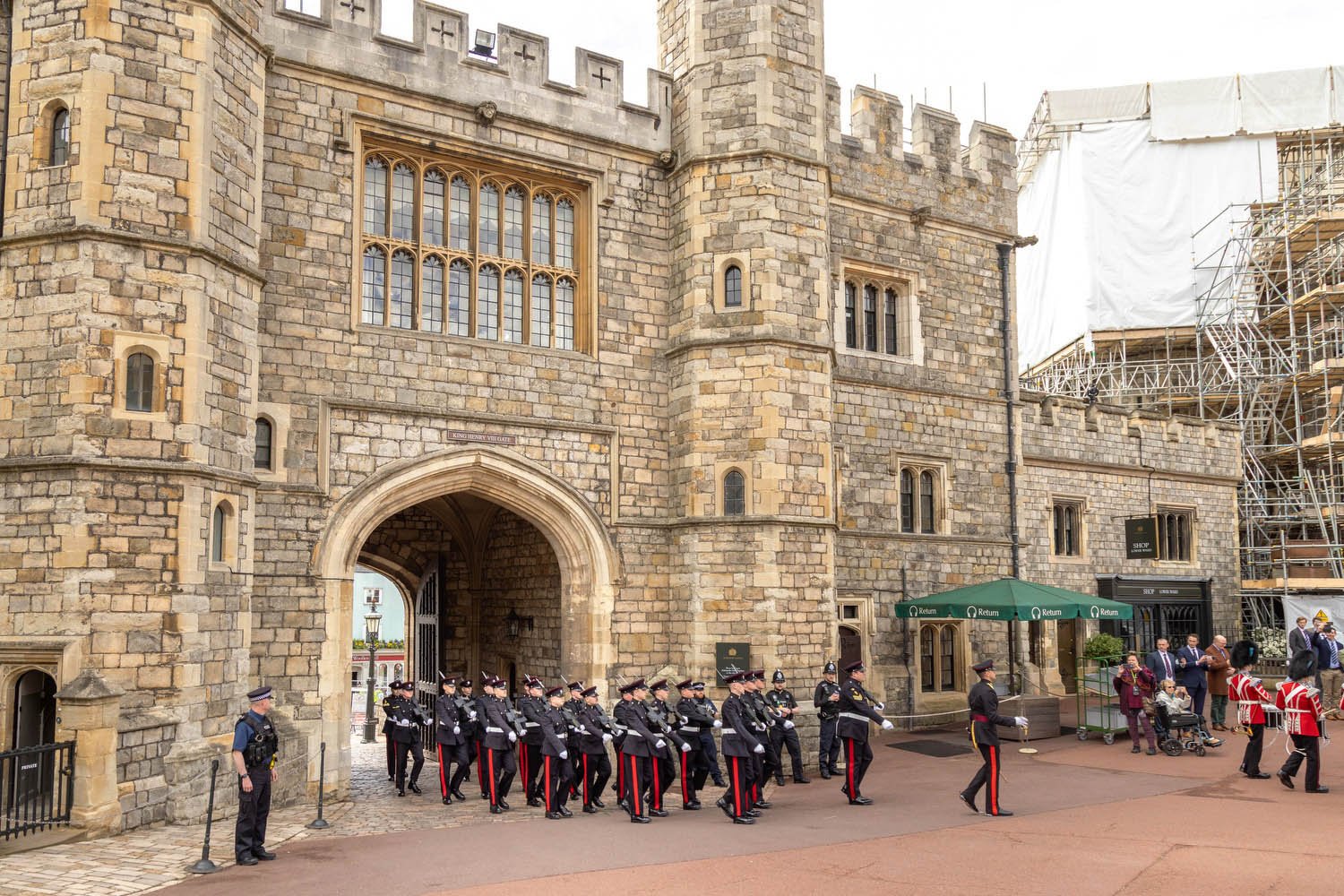
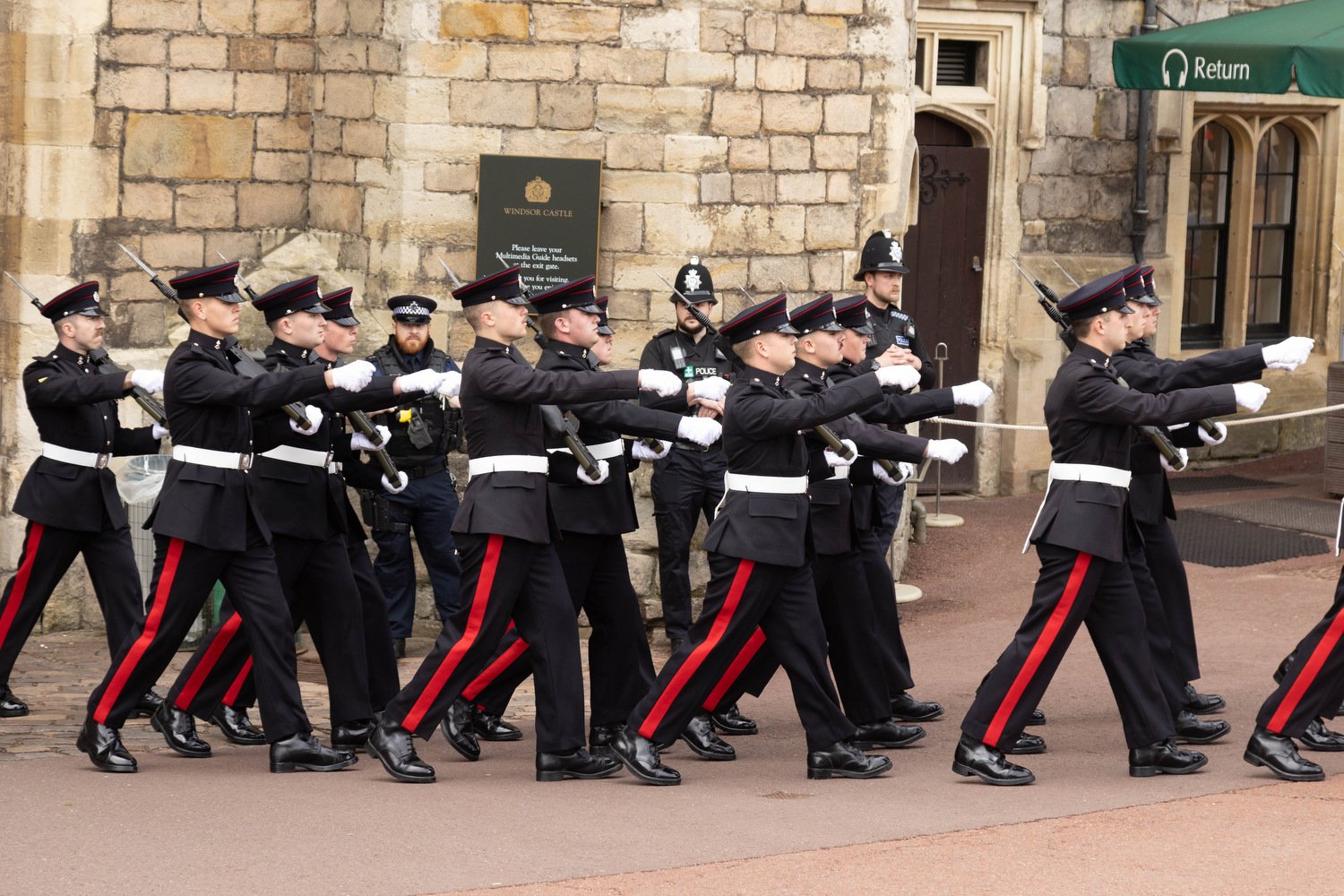
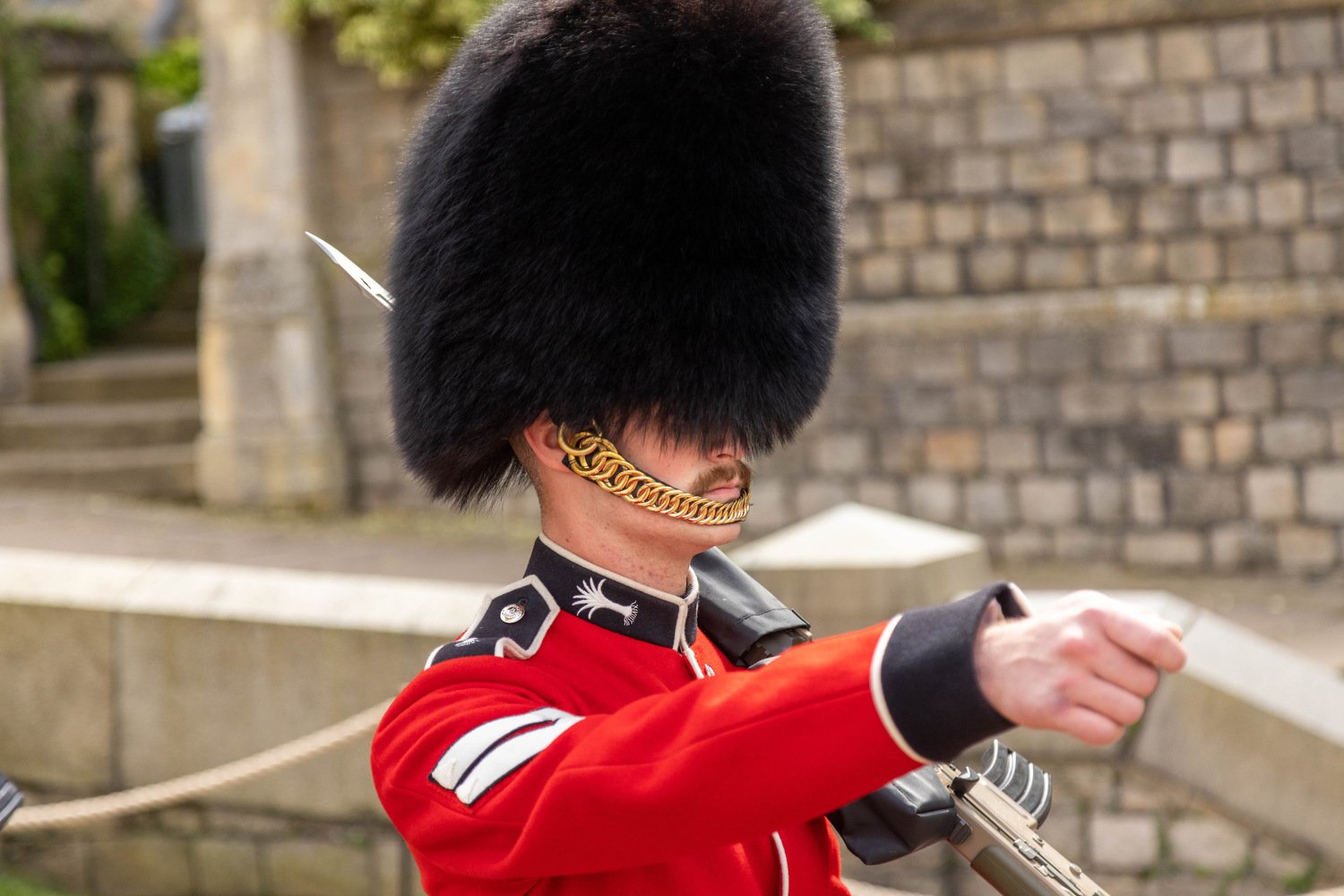
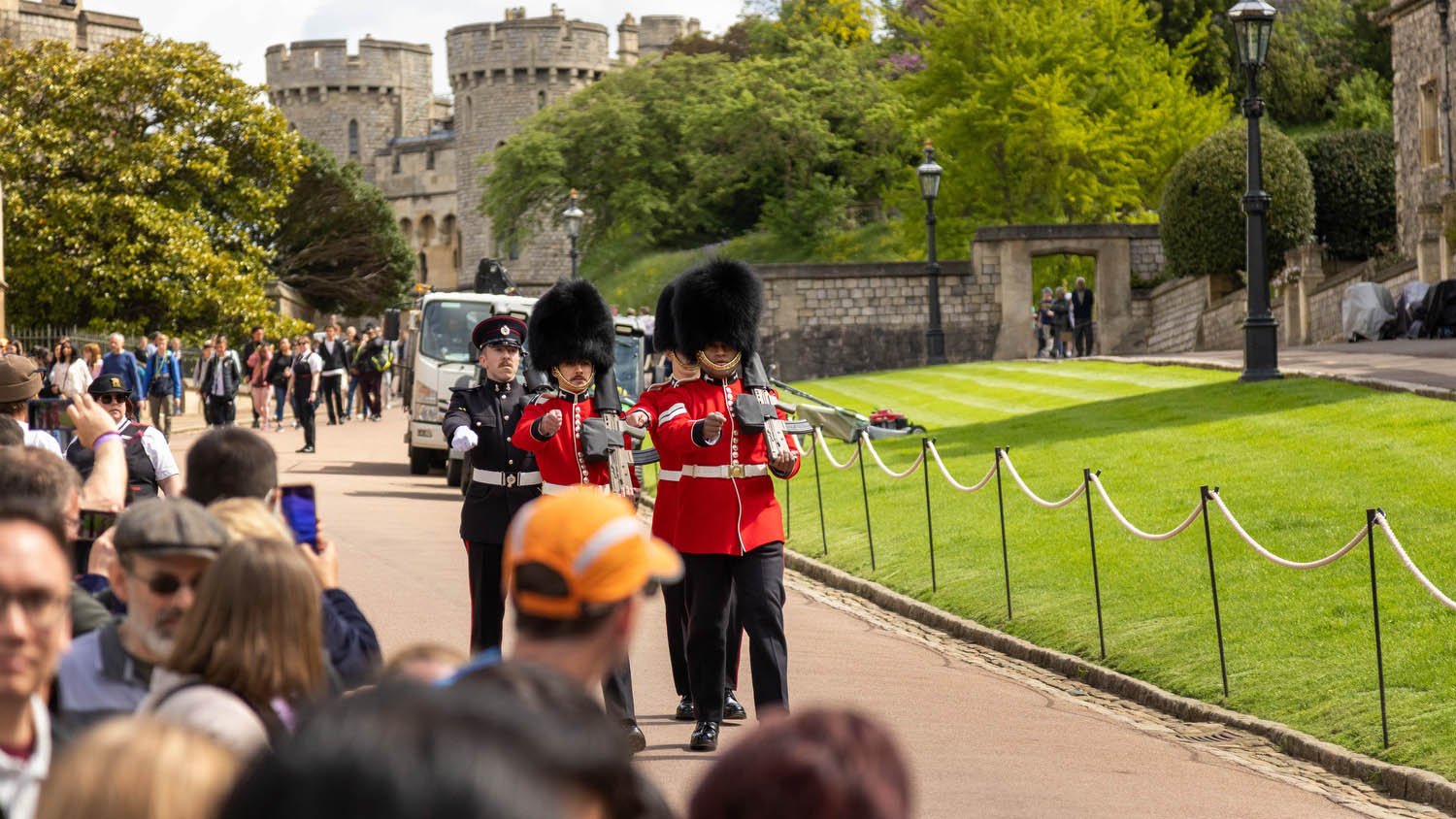





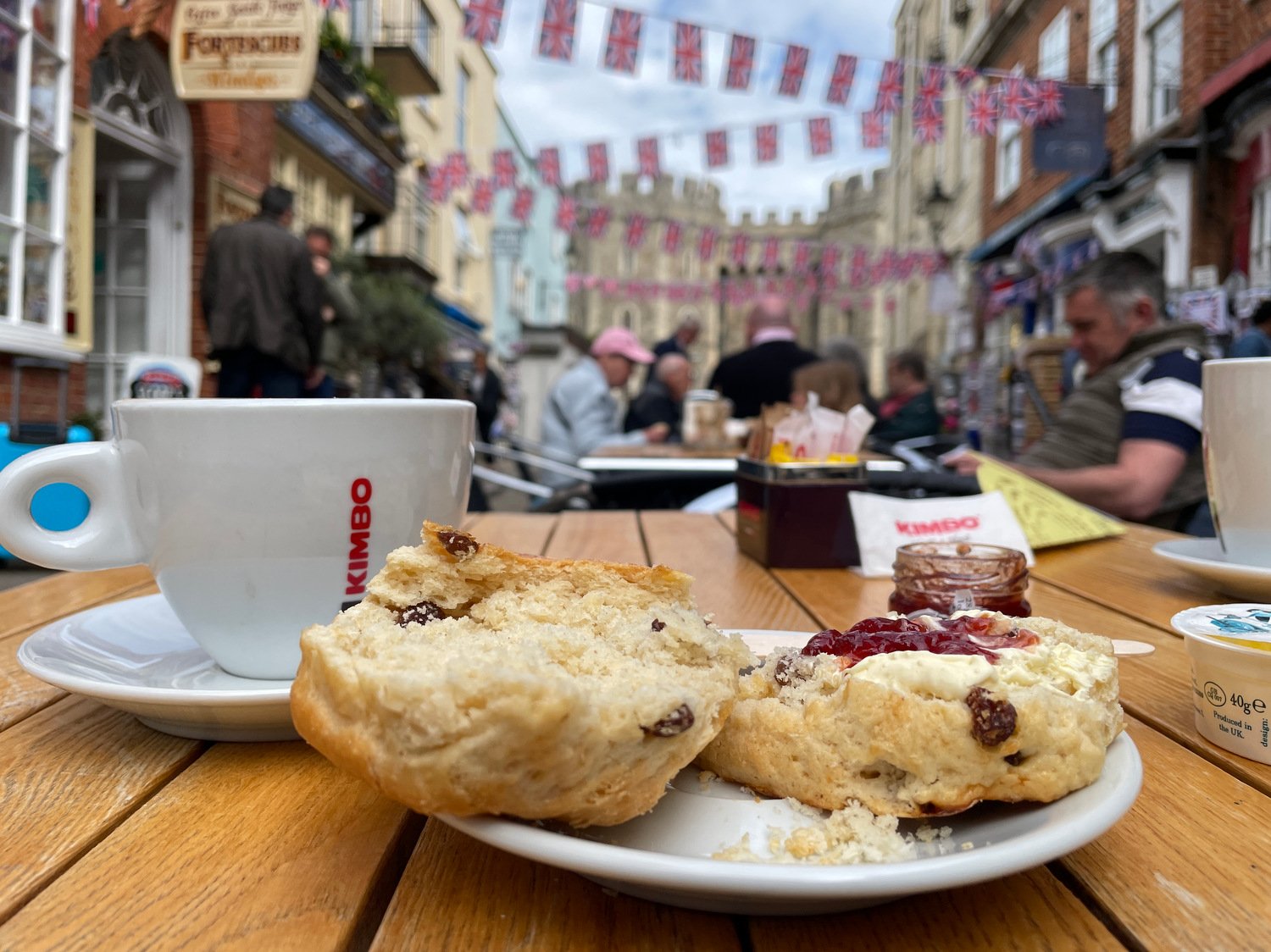
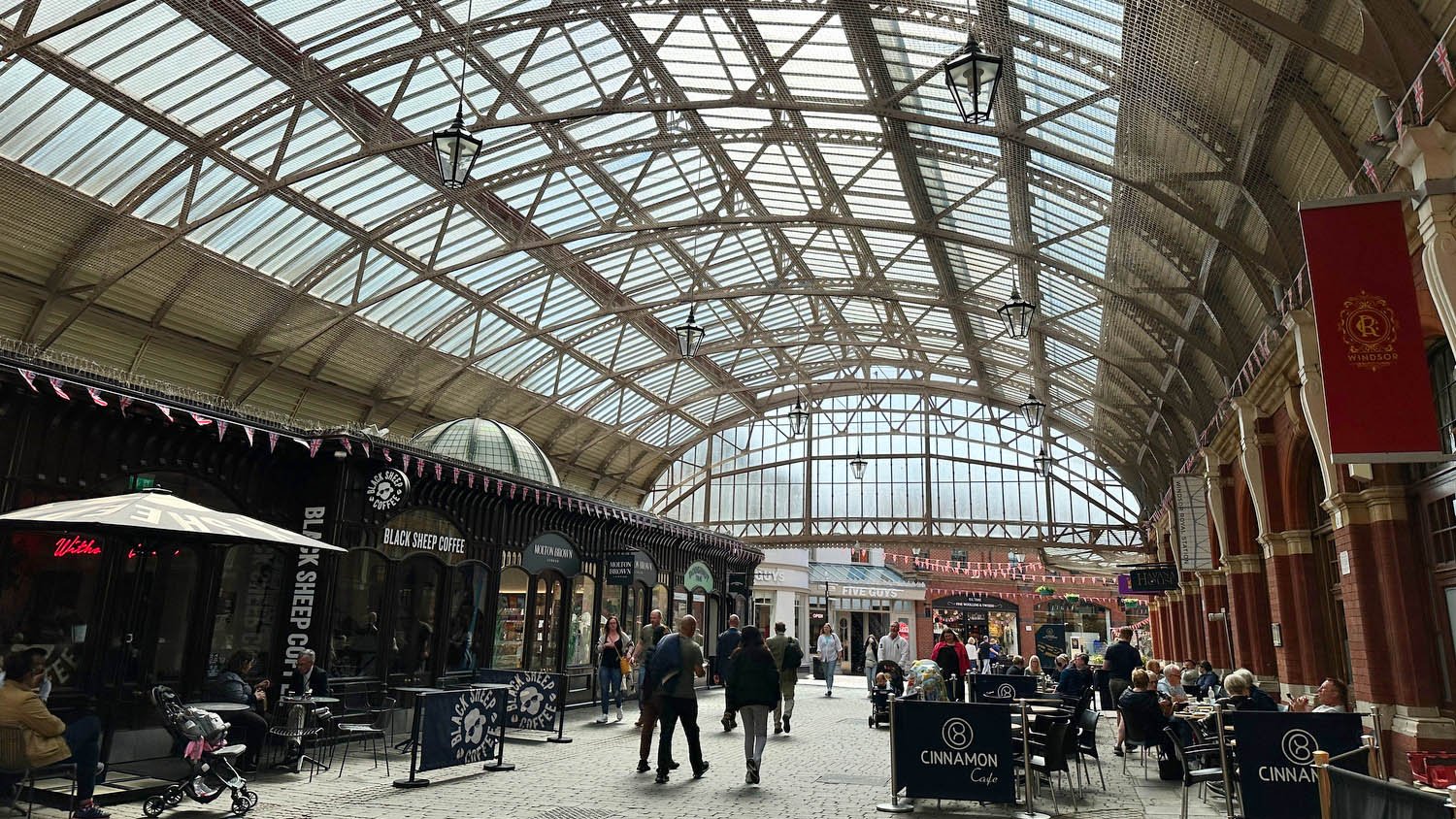
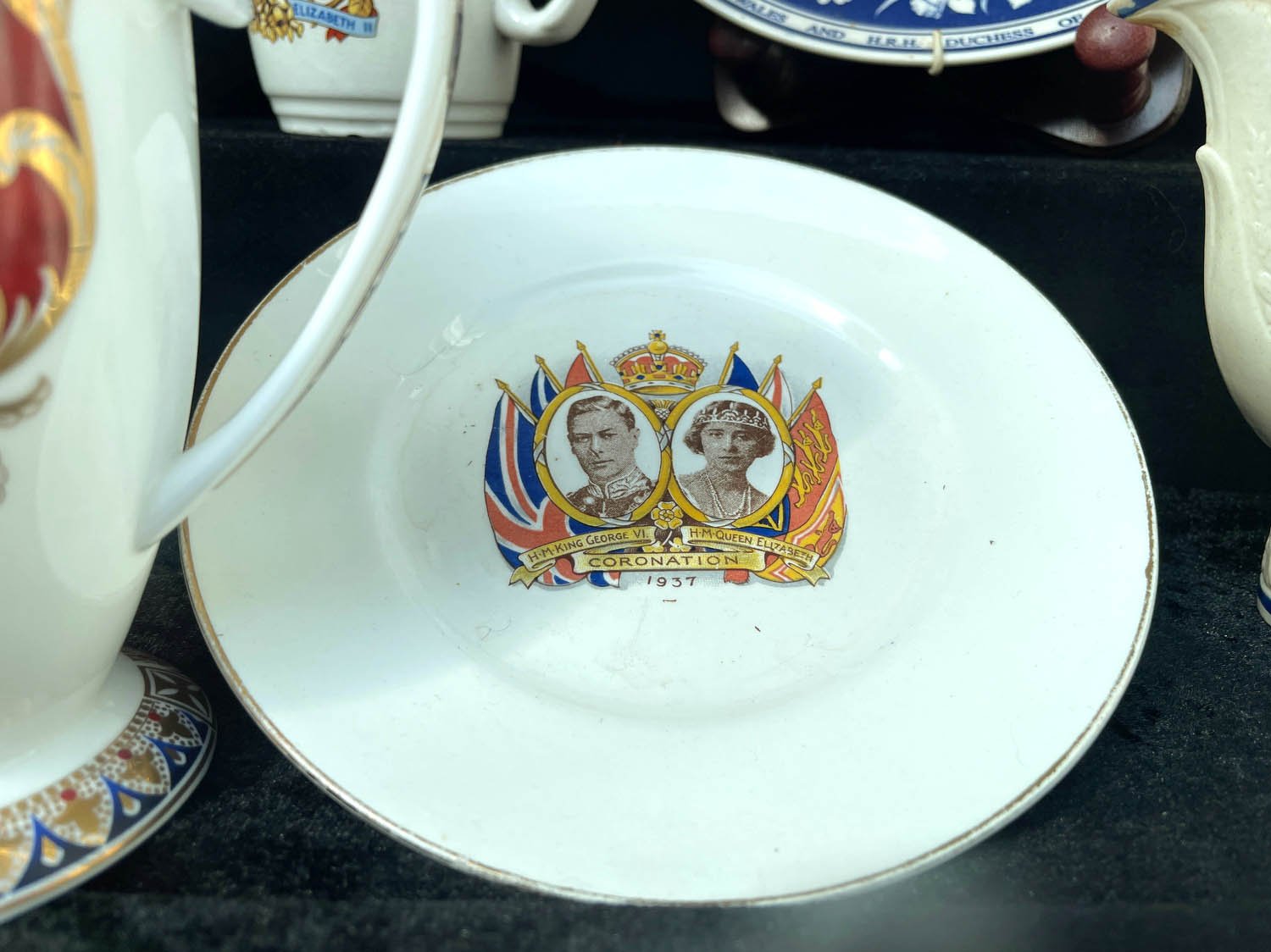
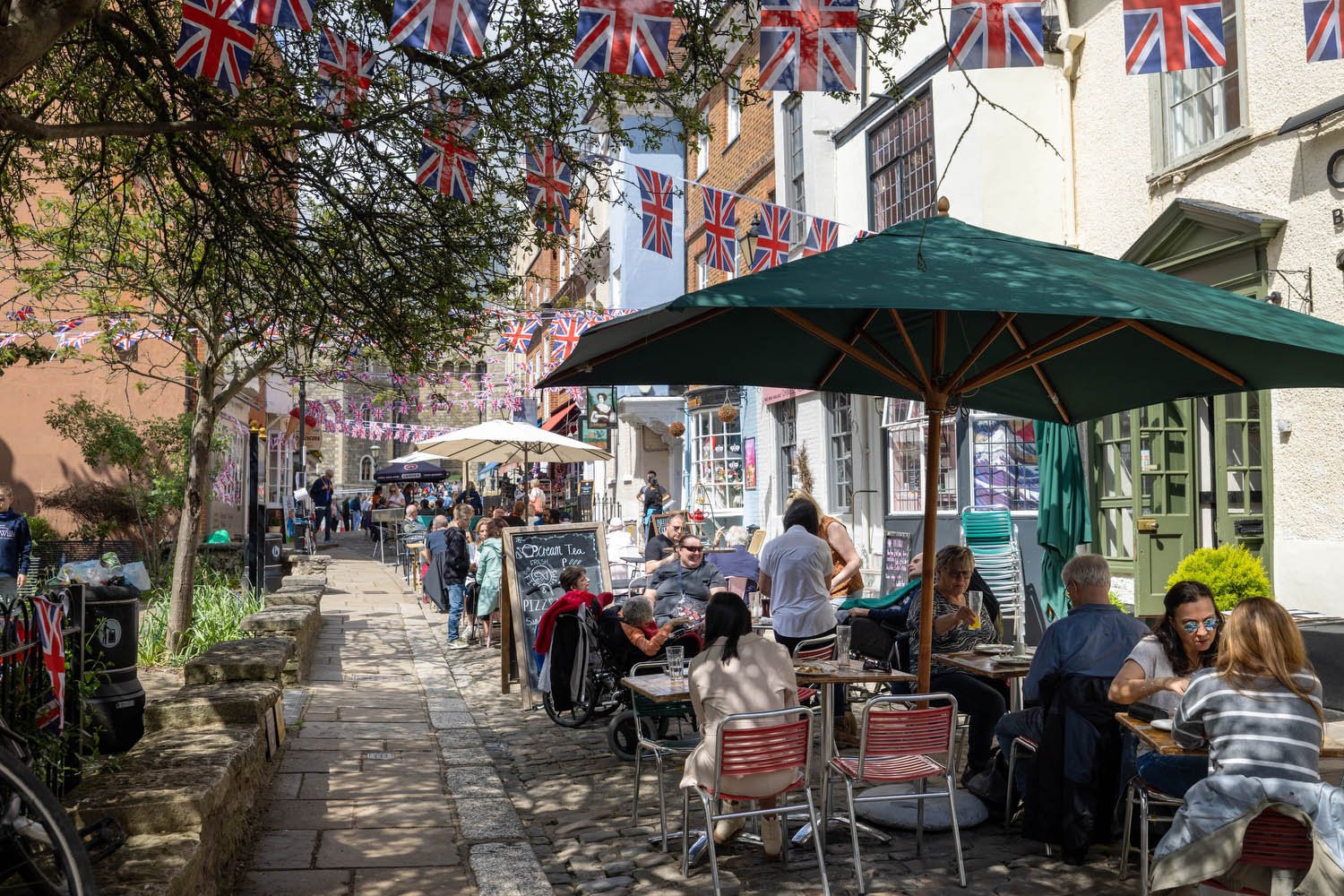








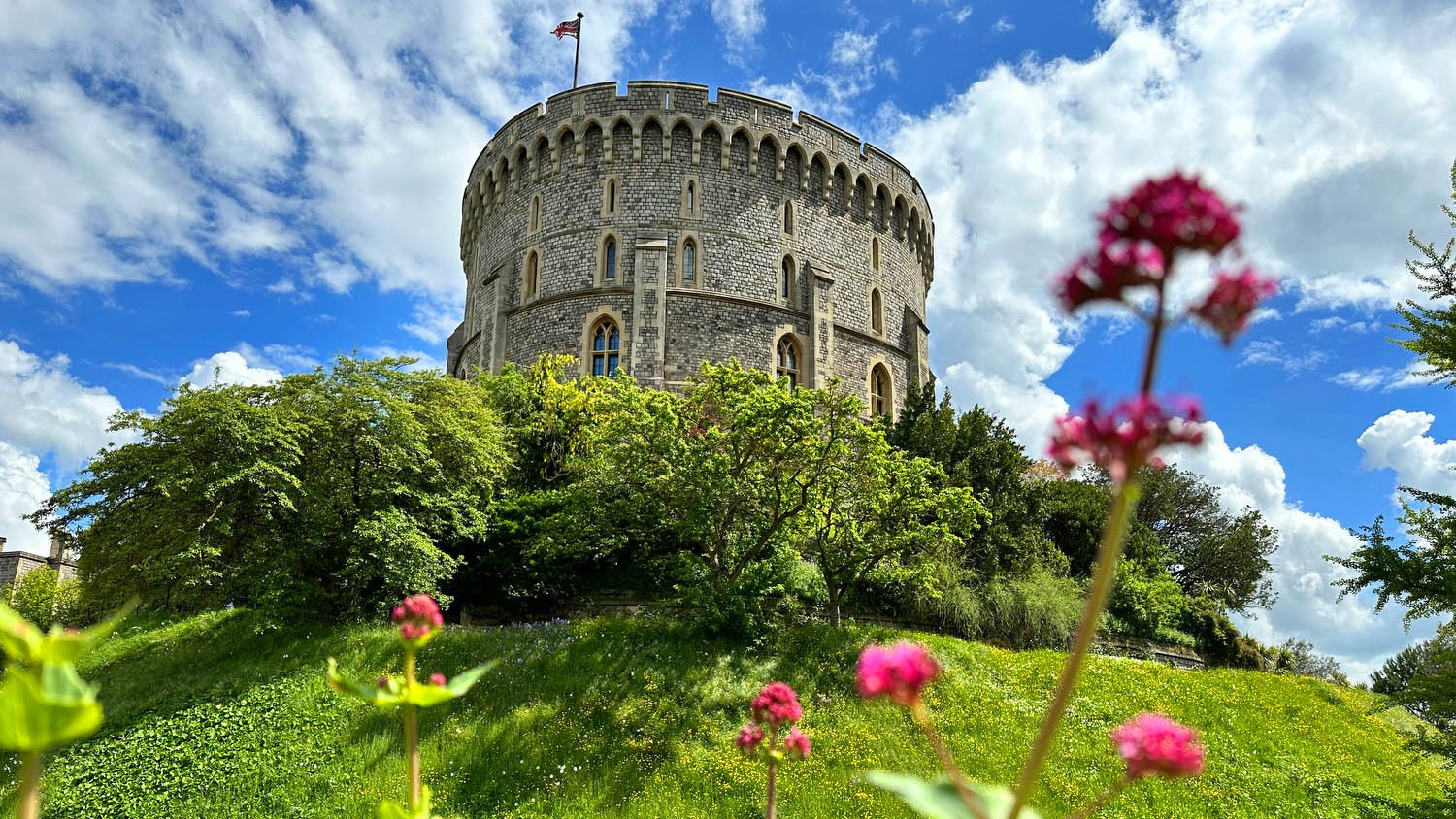
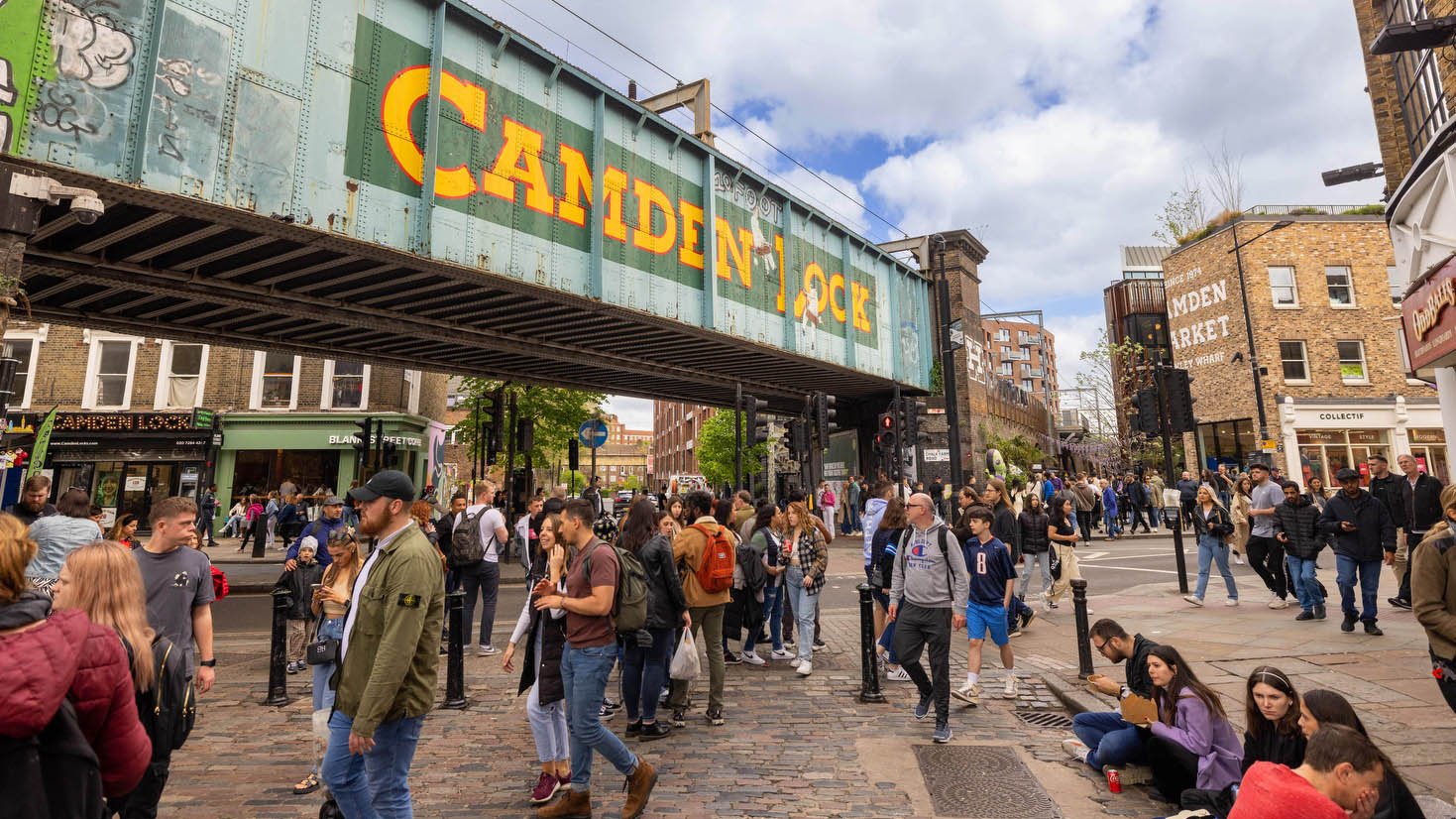
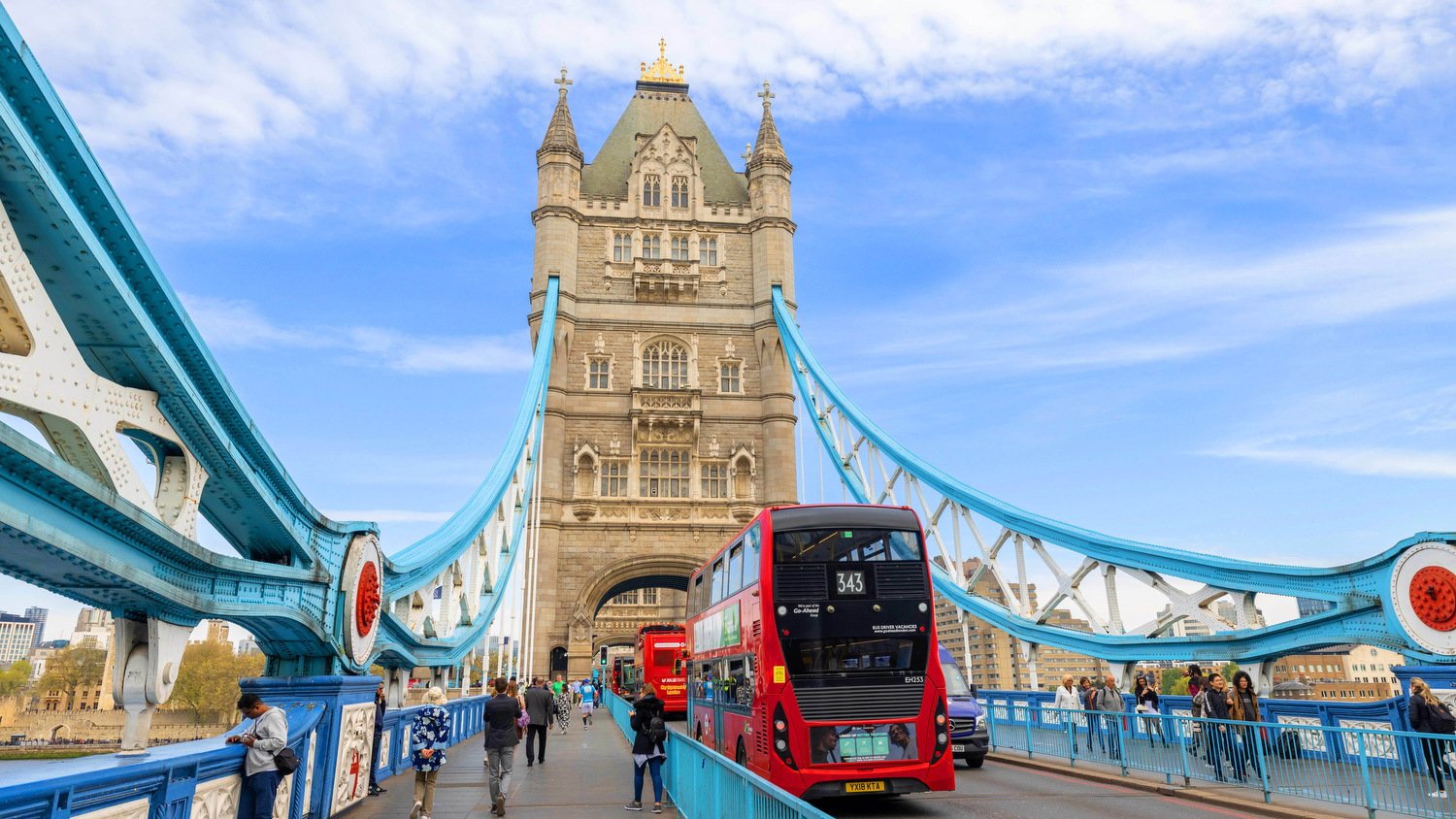


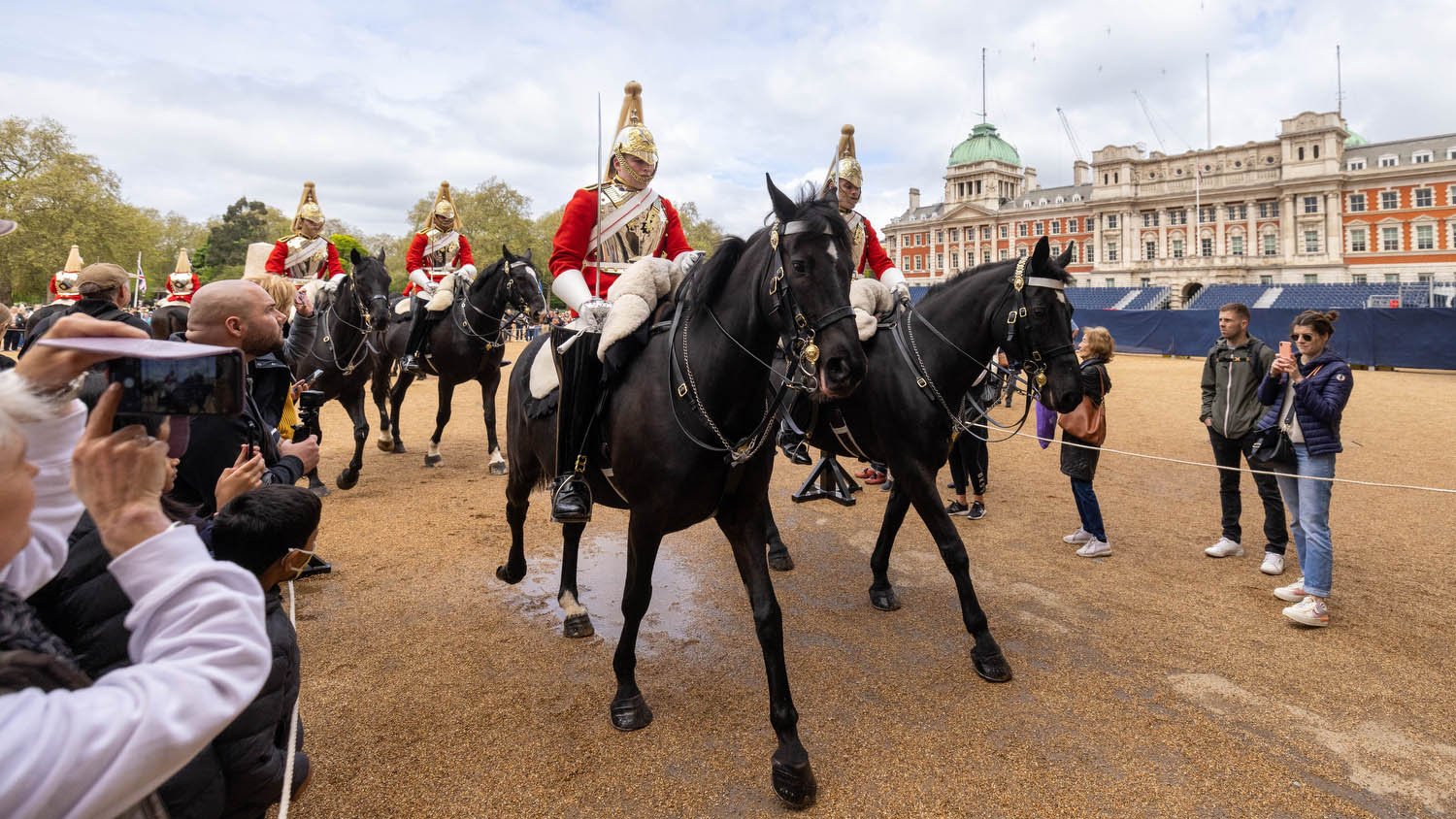

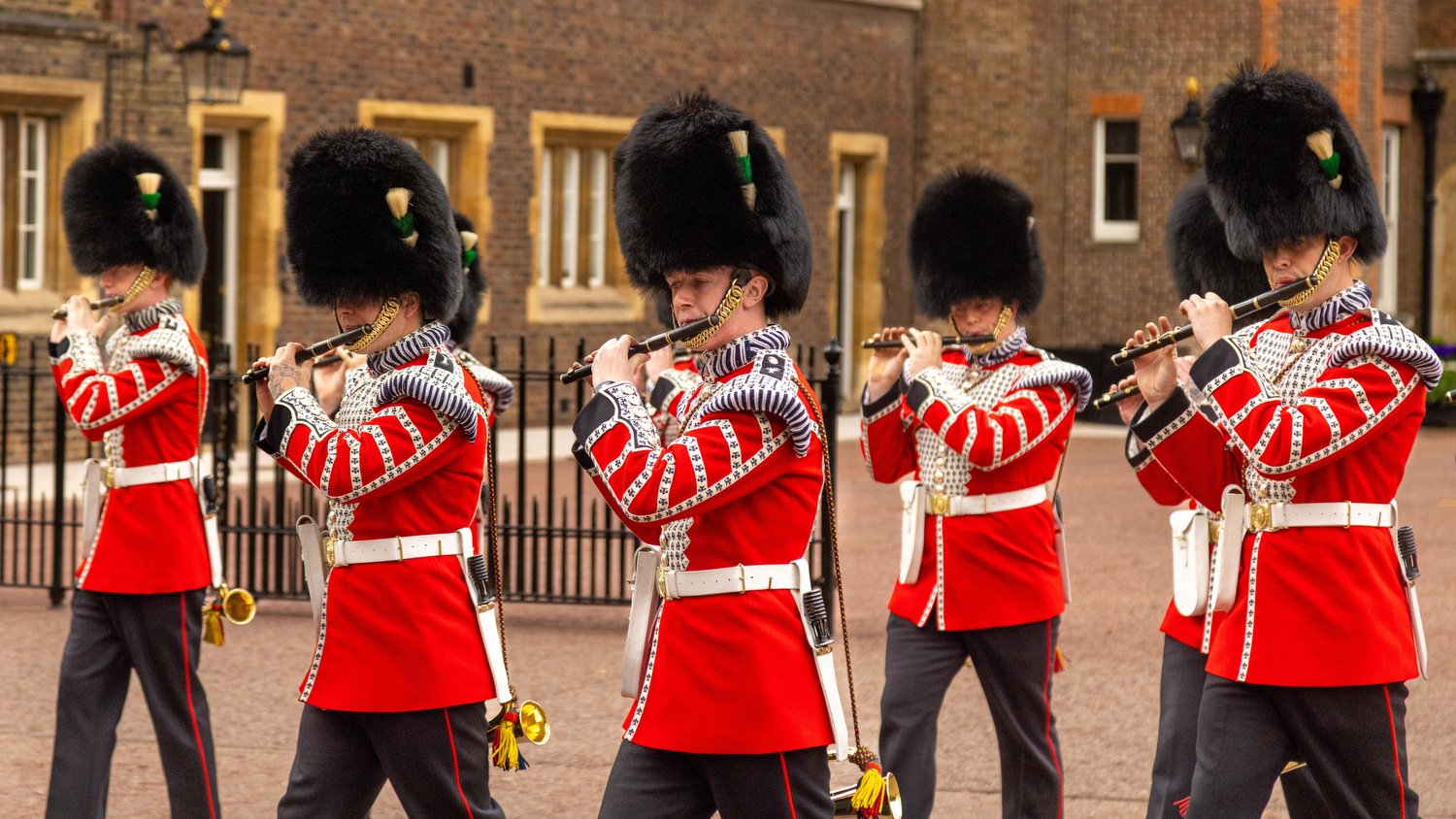

Buckingham Palace tour is a special chance to go behind the golden gates.